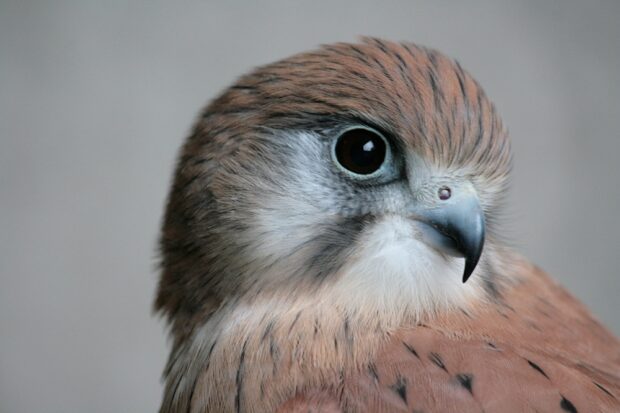A new joint study by RMIT and the University of Bristol has revealed secrets to the remarkably steady flight of kestrels and could inform future drone designs and flight control strategies.
The study, “Steady as they hover: kinematics of kestrel wing and tail morphing during hovering flights,” was published in the Journal of Experimental Biology. It is a collaboration between Mario Martinez Groves-Raines, George Yi, Matthew Penn, Simon Watkins, Shane Windsor and Abdulghani Mohamed.
Making drones safer and more stable in turbulent conditions, or in cities where wind gusts from tall buildings make flying more difficult, makes applications like parcel delivery, food delivery and environmental monitoring more feasible, more often.
The study conducted in RMIT’s Industrial Wind Tunnel facility—one of the largest of its kind in Australia—is the first to precisely measure the stability of a Nankeen Kestrel’s head during hovering flight, finding movement of less than 5mm during hunting behavior.
“Typically, aircraft use flap movements for stabilization to achieve stability during flight,” said RMIT lead researcher Dr. Abdulghani Mohamed.
“Our results acquired over several years, show birds of prey rely more on changes in surface area, which is crucial as it may be a more efficient way of achieving stable flight in fixed wing aircraft too.”
ABSTRACT
Wind-hovering birds exhibit remarkable steadiness in flight, achieved through the morphing of their wings and tail. We analysed the kinematics of two nankeen kestrels (Falco cenchroides) engaged in steady wind-hovering flights in a smooth flow wind tunnel. Motion-tracking cameras were used to capture the movements of the birds as they maintained their position.
The motion of the birds’ head and body, and the morphing motions of their wings and tail were tracked and analysed using correlation methods. The results revealed that wing sweep, representing the flexion/extension movement of the wing, played a significant role in wing motion.
Additionally, correlations between different independent degrees of freedom (DoF), including wing and tail coupling, were observed. These kinematic couplings indicate balancing of forces and moments necessary for steady wind hovering. Variation in flight behaviour between the two birds highlighted the redundancy of DoF and the versatility of wing morphing in achieving control.
This study provides insights into fixed-wing craft flight control from the avian world and may inspire novel flight control strategies for future fixed-wing aircraft.
The full paper can be accessed here.
Top Photo: A Nankeen Kestrel – RMIT
Source: Journal of Experimental Biology



